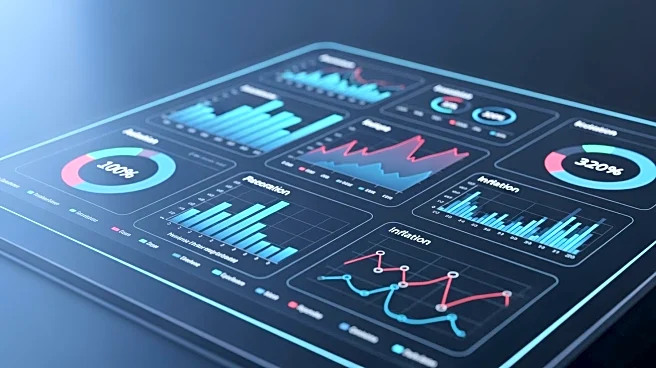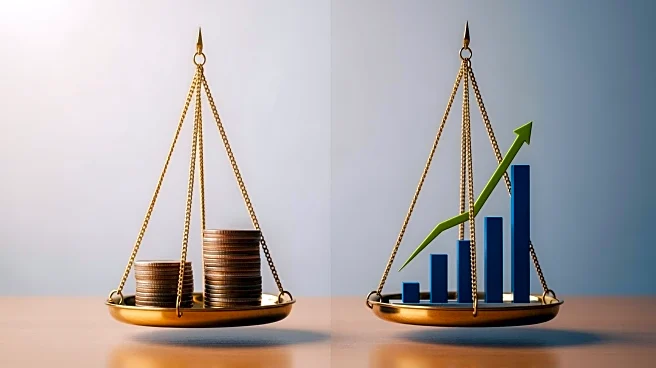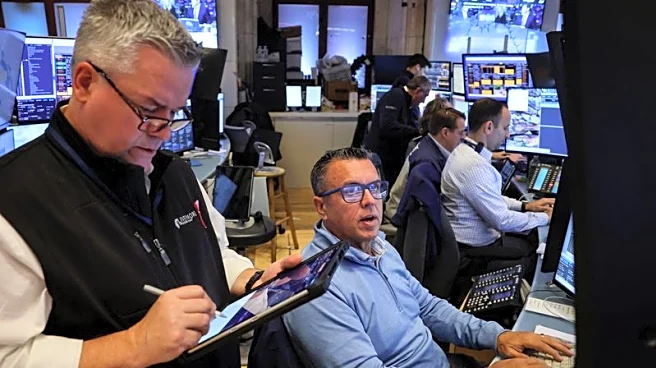What's Happening?
The annual inflation rate in the United States increased to 3% in September 2025, marking the highest rate since January of the same year. This rise follows a 2.9% rate in August and is slightly below
the forecasted 3.1%. The increase in inflation is driven by rising energy prices, particularly fuel oil and gasoline, while other sectors like food and transportation services have seen slower price increases. The Consumer Price Index (CPI) rose by 0.3% compared to the previous month, with gasoline prices being a significant contributor to this increase.
Why It's Important?
Inflation affects the purchasing power of consumers and the cost of living, influencing economic decisions and policy-making. A rise in inflation can lead to higher interest rates, affecting borrowing costs and investment strategies. The current rate of 3% suggests a moderate increase in prices, which can impact various sectors differently. Energy prices, in particular, have seen significant increases, affecting transportation and production costs. Understanding these trends is crucial for policymakers and economic stakeholders to manage inflation effectively and ensure economic stability.
What's Next?
The Bureau of Labor Statistics will continue to monitor inflation trends, providing updates on changes in the CPI. Policymakers may adjust monetary policies to manage inflation and ensure economic stability. Businesses and consumers will need to adapt to these changes, potentially altering spending and investment strategies. The ongoing analysis of inflation data will help identify areas of concern and guide economic policy decisions.
Beyond the Headlines
Inflation has broader implications for economic planning and social welfare. Persistent inflation can lead to increased interest rates, affecting borrowing costs and investment strategies. It also influences wage negotiations and can impact income distribution, potentially leading to social and economic disparities. Understanding these dynamics is essential for developing effective economic policies and ensuring equitable growth.












